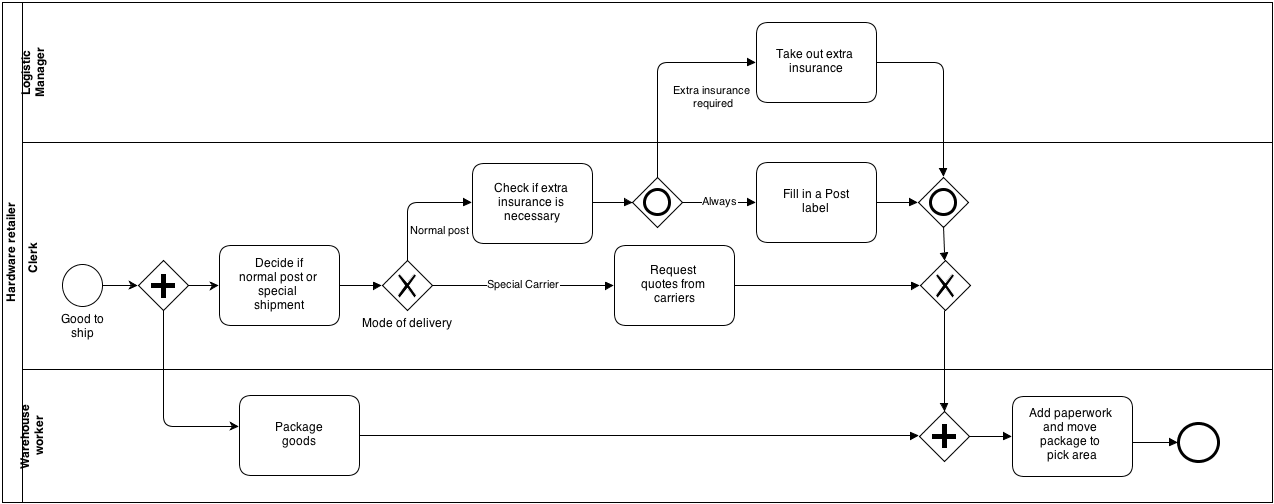The low-code for developers with yesterday's deadline
Viewflow is a low-code, reusable component library for creating comprehensive business applications with ease. Built on top of Django, Viewflow simplifies development by providing pre-built components for user management, workflows, and reporting, while still offering flexibility to customize and integrate with existing systems.
With Viewflow, you can create full-featured business applications in just a few lines of code using its reusable component library. It's shipped as a single package with batteries included, and each part of Viewflow can be used independently of the others, but they all work well together.
Viewflow comes in two flavors:
- Viewflow Core: A lightweight, open-source library with only non-opinionated core classes that allows you to build your custom solution on top.
- Viewflow PRO: A comprehensive package that includes reference functionality implementation and integrated with third-party Django packages. This package has a commercial-friendly license that allows private forks and modifications of Viewflow.
- Modern, responsive user interface with an SPA-style look and feel
- Reusable workflow library for quick implementation of BPMN workflows
- Built-in customizable CRUD for managing complex forms and data
- Integrated reporting dashboard
- Small and concise API
Viewflow works with Python 3.8 or greater and Django 4.0+
Viewflow:
pip install django-viewflow --pre
Viewflow-PRO
pip install django-viewflow-pro --extra-index-url https://pypi.viewflow.io/<licence_id>/simple/ --pre
Add 'viewflow' and, in case you need workflow capabilities 'viewflow.workflow' to the INSTALLED_APPS settings.py
INSTALLED_APPS = [
....
'viewflow',
'viewflow.workflow',
]Here's an example of how to create a simple pizza ordering workflow using Viewflow:
- Create a model to store process data
Before creating the workflow, you'll need to define a model to store the process data. Viewflow provides a Process model as the base model for your process instances. You can add your own fields to the model using jsonstore fields to avoid model inheritance and additional joins:
from viewflow import jsonstore
from viewflow.workflow.models import Process
class PizzaOrder(Process):
customer_name = jsonstore.CharField(max_length=250)
address = jsonstore.TextField()
toppings = jsonstore.TextField()
tips_received = jsonstore.IntegerField(default=0)
baking_time = jsonstore.IntegerField(default=10)
class Meta:
proxy = True- Create a new flow definition file flows.py
Next, create a new flow definition file flows.py and define your workflow. In this example, we'll create a PizzaFlow class that inherits from flow.Flow. We'll define three steps in the workflow: start, bake, and deliver. We'll use CreateProcessView and UpdateProcessView to create and update the process data from PizzaOrder:
from viewflow import this
from viewflow.workflow import flow
from viewflow.workflow.flow.views import CreateProcessView, UpdateProcessView
from .models import PizzaOrder
class PizzaFlow(flow.Flow):
process_class = PizzaOrder
start = flow.Start(
CreateProcessView.as_view(
fields=["customer_name", "address", "toppings"]
)
).Next(this.bake)
bake = flow.View(
UpdateProcessView.as_view(fields=["baking_time"])
).Next(this.deliver)
deliver = flow.View(
UpdateProcessView.as_view(fields=["tips_received"])
).Next(this.end)
end = flow.End()- Add the flow to your URL configuration:
Finally, add the PizzaFlow to your URL configuration. You can use the Site and FlowAppViewset classes to register your workflow with the pre-built frontend.
from django.urls import path
from viewflow.contrib.auth import AuthViewset
from viewflow.urls import Application, Site
from viewflow.workflow.flow import FlowAppViewset
from my_pizza.flows import PizzaFlow
site = Site(
title="Pizza Flow Demo",
viewsets=[
FlowAppViewset(PizzaFlow, icon="local_pizza"),
]
)
urlpatterns = [
path("accounts/", AuthViewset().urls),
path("", site.urls),
]- Make and run migrations and access the workflow through the pre-built frontend.
Make and run migrations to create the necessary database tables, then start your Django server and access the workflow through the pre-built frontend. You should be able to create and track pizza orders with the workflow.
Viewflow's documentation for the latest version is available at http://docs.viewflow.io/
Documentarian for Viewflow 1.xx series available at http://v1-docs.viewflow.io
For sample applications and code snippets, check out the Viewflow PRO cookbook at
https://github.com/viewflow/cookbook
Viewflow is an Open Source project licensed under the terms of the AGPL license - The GNU Affero General Public License v3.0 with the Additional Permissions described in LICENSE_EXCEPTION
The AGPL license with Additional Permissions is a free software license that allows commercial use and distribution of the software. It is similar to the GNU GCC Runtime Library license, and it includes additional permissions that make it more friendly for commercial development.
You can read more about AGPL and its compatibility with commercial use at the AGPL FAQ
If you use Linux already, this package license likely won't bring anything new to your stack.
Viewflow PRO has a commercial-friendly license allowing private forks and modifications of Viewflow. You can find the commercial license terms in COMM-LICENSE.
- Fixed default values for jsonstore fields in forms.
- Pre-built workflow views now accept the layout option for forms.
- Improved success redirects for workflow action views.
- Enabled the 'Undo' action for celery.Job.
- Extended celery.Job activation to allow its use within the start and end tasks of celery.chord.
- Stored error traces and local variables in task.data JSON for failed celery.Job tasks.
- Enhanced handling of obsolete nodes.
- Fixed the JS calendar date shift issue for time zones with negative time offsets.




